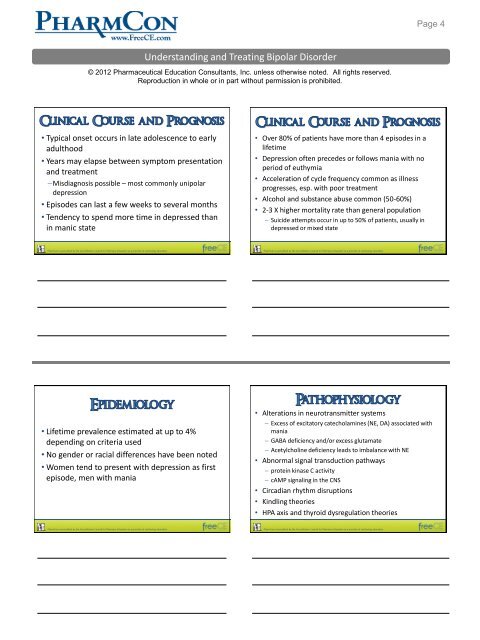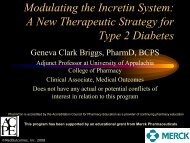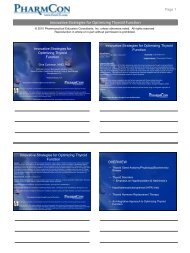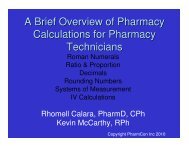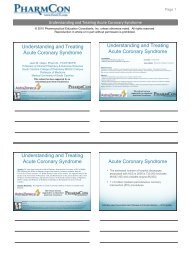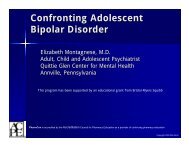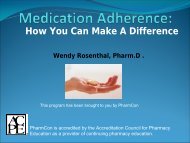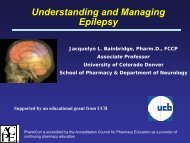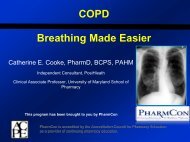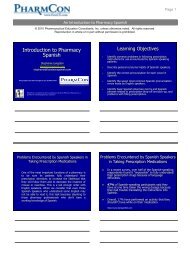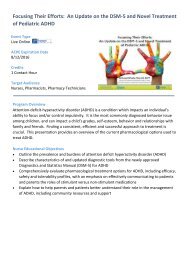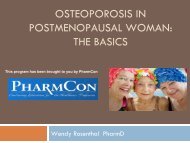Understanding and Treating Bipolar Disorder - Free CE
Understanding and Treating Bipolar Disorder - Free CE
Understanding and Treating Bipolar Disorder - Free CE
Create successful ePaper yourself
Turn your PDF publications into a flip-book with our unique Google optimized e-Paper software.
Page 4<strong>Underst<strong>and</strong>ing</strong> <strong>and</strong> <strong>Treating</strong> <strong>Bipolar</strong> <strong>Disorder</strong>© 2012 Pharmaceutical Education Consultants, Inc. unless otherwise noted. All rights reserved.Reproduction in whole or in part without permission is prohibited.• Typical onset occurs in late adolescence to earlyadulthood• Years may elapse between symptom presentation<strong>and</strong> treatment–Misdiagnosis possible – most commonly unipolardepression• Episodes can last a few weeks to several months• Tendency to spend more time in depressed thanin manic state• Over 80% of patients have more than 4 episodes in alifetime• Depression often precedes or follows mania with noperiod of euthymia• Acceleration of cycle frequency common as illnessprogresses, esp. with poor treatment• Alcohol <strong>and</strong> substance abuse common (50-60%)• 2-3 X higher mortality rate than general population– Suicide attempts occur in up to 50% of patients, usually indepressed or mixed statePharmCon is accredited by the Accreditation Council for Pharmacy Education as a provider of continuing education.PharmCon is accredited by the Accreditation Council for Pharmacy Education as a provider of continuing education.• Lifetime prevalence estimated at up to 4%depending on criteria used• No gender or racial differences have been noted• Women tend to present with depression as firstepisode, men with mania• Alterations in neurotransmitter systems– Excess of excitatory catecholamines (NE, DA) associated withmania– GABA deficiency <strong>and</strong>/or excess glutamate– Acetylcholine deficiency leads to imbalance with NE• Abnormal signal transduction pathways– protein kinase C activity– cAMP signaling in the CNS• Circadian rhythm disruptions• Kindling theories• HPA axis <strong>and</strong> thyroid dysregulation theoriesPharmCon is accredited by the Accreditation Council for Pharmacy Education as a provider of continuing education.PharmCon is accredited by the Accreditation Council for Pharmacy Education as a provider of continuing education.


